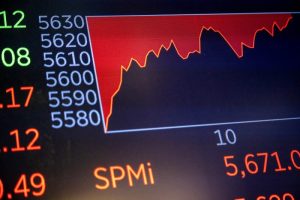If a 40 year old invests £600 a month in a SIPP, here’s what they could have by retirement


How much can someone hope to have in their Self-Invested Personal Pension (SIPP) by the time they retire?
The answer to that question depends on three main variables.
First, what is the timeline?
In this example I presume a retirement age of 67 – so for someone who is 40 today, that means a 27-year timeframe.
The second variable is the amount invested.
Here I assume £600. In reality, everyone is different and will make their own choices about how much they can afford to put aside regularly into their SIPP.
Small differences can be magnified by time
The third variable is the compound annual growth rate achieved over the lifetime of the SIPP.
What seem like small differences can have a big impact, thanks to the compounding effect over a long timeframe.
For example, at a 5% compound annual growth rate, today’s 40-year-old contributing £600 a month will have a retirement fund at 67 worth around £402,600.
At an 8% compound annual growth rate, though, that fund will be almost £652,000. That is a big difference!
Choosing a realistic strategy for investing
That 8% compound annual growth rate does not necessarily require an 8% dividend yield (or any dividends at all, in fact).
It is a combination of dividends plus capital growth, minus any capital loss from shares sold for less than they cost.
So, in today’s market I think it is achievable.
But not everyone investing in a SIPP has much, or any, experience and they may not want to spend large amounts of time monitoring their investments over the next quarter of a century or so.
I think it helps to take a realistic approach – not being too greedy, sticking to what you understand, diversifying across a range of shares and weighing risks seriously.
On top of that, it makes sense to choose a SIPP that is competitive in terms of the fees it levies, as they eat into overall returns.
One share to consider for a SIPP
To illustrate that approach, one share I think investors should consider is insurer Aviva (LSE: AV).
Its current dividend yield of 6.7% would already go a significant way towards achieving an 8% compound annual growth rate. The annual dividend per share has been growing strongly in recent years, following a cut in 2020.
The Aviva share price is up 8% over the past year and has more than doubled over five.
I think the business can potentially keep performing strongly. Insurance is a market with high, resilient demand and Aviva has a commanding position in the UK’s general insurance sector.
That could get even stronger with its proposed takeover of rival Direct Line. That should offer economies of scale, although I also see a risk that Direct Line’s mixed performance of recent years could continue, acting as a drag on Aviva.
Still, with a proven business model, strong market share and juicy dividend, I see Aviva as a share SIPP investors should consider.
The post If a 40 year old invests £600 a month in a SIPP, here’s what they could have by retirement appeared first on The Motley Fool UK.
5 stocks for trying to build wealth after 50
The cost of living crisis shows no signs of slowing… the conflict in the Middle East and Ukraine shows no sign of resolution, while the global economy could be teetering on the brink of recession.
Whether you’re a newbie investor or a seasoned pro, deciding which stocks to add to your shopping list can be a daunting prospect during such unprecedented times. Yet despite the stock market’s recent gains, we think many shares still trade at a discount to their true value.
Fortunately, The Motley Fool UK analyst team have short-listed five companies that they believe STILL boast significant long-term growth prospects despite the global upheaval…
We’re sharing the names in a special FREE investing report that you can download today. We believe these stocks could be a great fit for any well-diversified portfolio with the goal of building wealth in your 50’s.
More reading
- With value investing back in vogue, I’m taking a leaf out of Warren Buffett’s playbook
- With a £20K ISA, an investor could earn £1,500 a year from FTSE 100 shares
- Up 125% in 5 years and yielding 6.5%! Are Aviva shares the FTSE’s best all-rounder?
- £10,000 in savings? Here’s how an investor could target a £1,357 monthly passive income
- As the ISA deadline looms, here are 2 dividend-paying stocks I have been loading up on
C Ruane has no position in any of the shares mentioned. The Motley Fool UK has no position in any of the shares mentioned. Views expressed on the companies mentioned in this article are those of the writer and therefore may differ from the official recommendations we make in our subscription services such as Share Advisor, Hidden Winners and Pro. Here at The Motley Fool we believe that considering a diverse range of insights makes us better investors.




